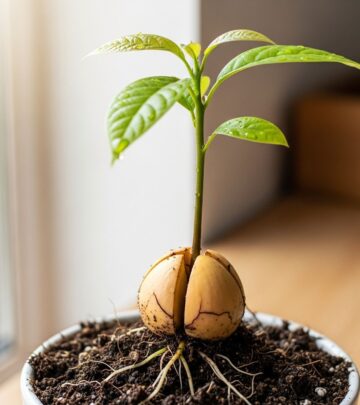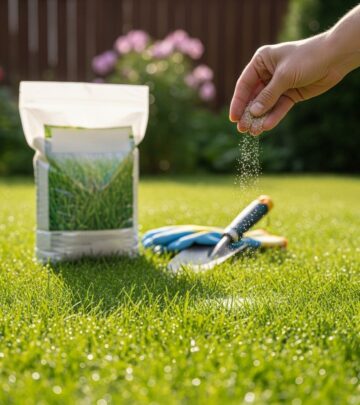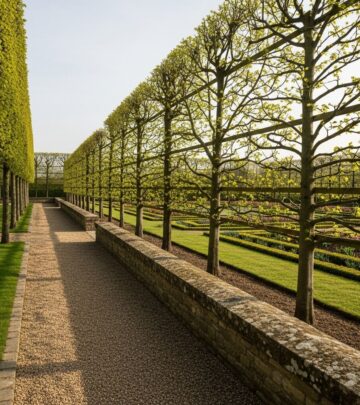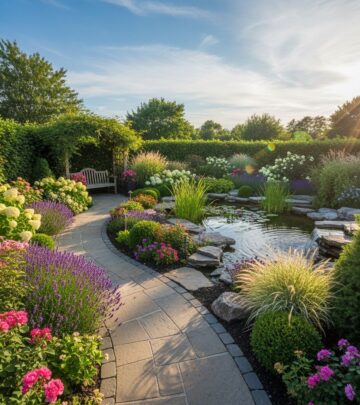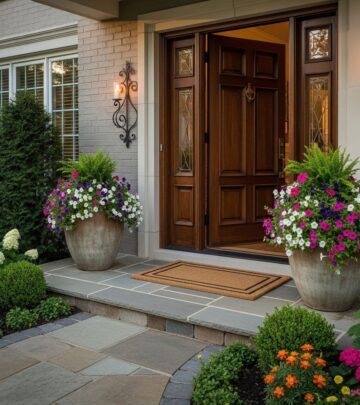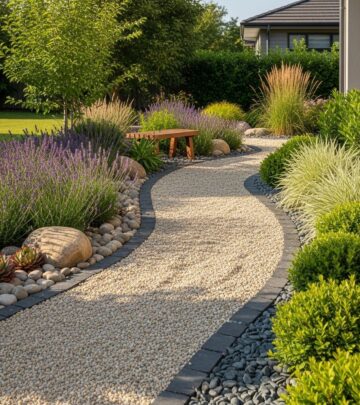Landscape Design Principles: 10 Essential Elements & Guidelines
Transform your outdoor space into a harmonious sanctuary by mastering the fundamental elements and principles of landscape design
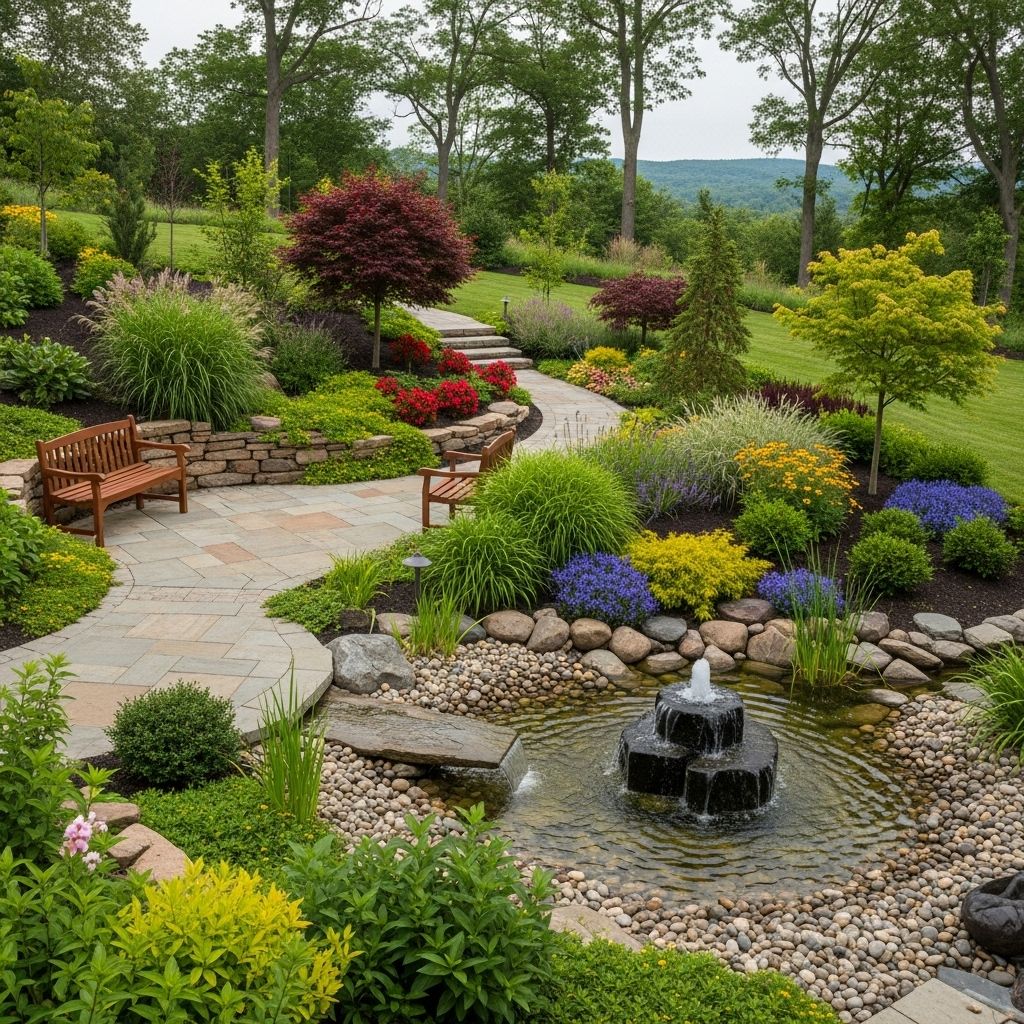
Image: HearthJunction Design Team
Understanding the Elements and Principles of Landscape Design
Creating a beautiful garden is both an art and a science. Whether you’re designing a small backyard retreat or an expansive landscape, understanding the fundamental elements and principles of design will help transform your outdoor space into a harmonious and visually appealing environment. This comprehensive guide explores the essential building blocks of landscape design and how to apply them to create your own garden sanctuary.
Landscape design combines creativity with technical knowledge, allowing you to express your personal style while creating functional outdoor spaces. By mastering these concepts, you’ll develop the skills to analyze existing gardens, identify what makes them successful, and apply those insights to your own projects. Let’s dive into the core elements that form the foundation of any well-designed landscape.
The Five Elements of Design
The elements of design are the basic visual characteristics that define every object in your landscape. They are the tools designers use to create compositions and organize space effectively. Understanding these elements will help you make informed decisions when selecting and arranging plants and hardscape features.
Mass and Form
Mass refers to the three-dimensional volume or bulk of an object, while form describes its shape and structure. Together, they create the primary visual impact in your garden. Mass and form are the main tools used to organize space in a landscape, providing the framework upon which other elements build.
Plants display a variety of forms that can be used strategically in design:
- Rounded forms (like boxwood or hydrangea) create a sense of stability and calm
- Vertical forms (such as Italian cypress or ornamental grasses) draw the eye upward and create dramatic focal points
- Spreading forms (including groundcovers and trailing plants) soften edges and create transitions
- Weeping forms (like Japanese maple or weeping cherry) add elegance and movement
When planning your garden, consider how different plant forms will interact with each other and with architectural elements. Contrasting forms create visual interest, while repetition of similar forms creates cohesion and rhythm.
Line
Lines are powerful directional forces that guide movement and create visual flow in the landscape. They can be physical elements like pathways, borders, or fences, or they can be implied by the arrangement of plants and other features. Lines have distinct psychological effects:
- Curved lines create a soft, restful feeling and encourage exploration
- Straight lines appear disciplined and controlled, creating a formal atmosphere
- Horizontal lines suggest stability and restfulness
- Vertical lines convey strength and draw attention upward
When incorporating lines into your design, use bold, confident strokes rather than weak, wobbly ones. A strong curved path is more effective than an uncertain meandering one. In formal gardens, straight lines typically intersect at right angles, creating a sense of order and precision.
Texture
Texture refers to the surface quality of materials in the landscape, both visual and tactile. It adds depth, interest, and contrast to garden designs. Plants offer a rich variety of textures through their leaves, flowers, bark, and overall structure:
- Fine textures (small leaves, thin stems) appear light and airy
- Medium textures provide balance and serve as good transitional elements
- Coarse textures (large leaves, bold structures) create drama and draw attention
Texture is relative—a plant appears fine or coarse depending on what surrounds it. Contrasting textures create visual excitement, while similar textures create harmony. Hardscape elements also contribute texture through materials like smooth concrete, rough stone, or weathered wood.
Color
Color is perhaps the most emotionally evocative element of design, capable of setting mood, creating illusions of space, and highlighting specific features. Understanding color relationships helps create cohesive designs:
- Complementary colors (opposite on the color wheel) create vibrant contrast
- Analogous colors (adjacent on the color wheel) create harmonious compositions
- Monochromatic schemes (variations of one color) create elegant, sophisticated looks
Cool colors (blues, purples, greens) tend to recede visually, making spaces feel larger and creating a calming effect. Warm colors (reds, oranges, yellows) advance visually, making spaces feel more intimate and energetic. Remember that color exists not just in flowers but in foliage, stems, bark, hardscape materials, and garden art.
Principles of Landscape Design
While the elements are the building blocks of design, the principles are the guidelines for how to use them effectively. These fundamental concepts help create compositions that are aesthetically pleasing and visually balanced.
Balance
Balance refers to the equal distribution of visual weight in a garden. There are two types:
- Symmetrical balance (formal) mirrors elements on either side of a central axis
- Asymmetrical balance (informal) achieves equilibrium using different elements that have equal visual weight
A well-balanced garden feels stable and comfortable. To achieve asymmetrical balance, consider that larger objects closer to the viewer have more visual weight than smaller objects farther away. Dark colors appear heavier than light ones, and coarse textures appear heavier than fine ones.
Proportion and Scale
Proportion refers to the size relationship between elements within the landscape, while scale relates to the size of elements in relation to human dimensions. Both are essential for creating comfortable, usable spaces.
A common mistake is planting trees and shrubs that will eventually outgrow their space. Consider the mature size of plants when designing, and ensure that garden elements are appropriately sized for their surroundings. For example, a narrow path feels constricting, while an overly wide one in a small garden wastes space and feels out of proportion.
Unity and Harmony
Unity is the principle that ties all elements together into a cohesive whole. A unified garden feels complete and purposeful rather than random. Harmony occurs when all parts work together to create a pleasing composition.
To achieve unity:
- Use a consistent design style throughout the garden
- Limit the variety of materials and plants
- Create transitions between different areas
- Ensure elements relate to each other and to the overall design
Unity doesn’t mean monotony—variety within a unified framework creates interest. The key is finding balance between cohesion and diversity.
Rhythm and Repetition
Rhythm creates a sense of movement and flow, guiding the viewer’s eye through the landscape. It results from the repetition of elements in a predictable pattern. Without repetition, rhythm cannot exist.
Create rhythm by repeating:
- Plant forms (rounded shrubs, vertical grasses)
- Colors (a particular flower color appearing throughout the garden)
- Materials (stone, wood, or metal elements)
- Shapes (circular beds, square pavers)
Effective repetition doesn’t mean exact duplication everywhere—variations on a theme create more sophisticated designs. For instance, repeat a plant type in different sizes or a color in different plants.
Focal Points
A focal point is a feature that captures attention and serves as a visual destination. It might be a specimen plant, a sculpture, a water feature, or an architectural element like a pergola or decorative gate.
Effective focal points:
- Draw the eye to a specific location
- Break up expanses of similar elements
- Create a sense of journey and discovery
- Reward viewers with something worthy of attention
Use focal points strategically—too many create confusion, while too few result in a monotonous landscape. Generally, one main focal point per garden room or viewing area is sufficient. Secondary focal points can guide movement through larger spaces.
Applying Design Elements and Principles
Understanding these concepts is just the beginning—the real art lies in their application. Here are some practical approaches to implementing design elements and principles in your garden:
Creating a Design Concept
Begin with a clear concept or theme that will guide your choices. This might be a specific garden style (cottage, modern, woodland), a color scheme, or a functional goal (outdoor entertaining, wildlife habitat). A strong concept helps create unity and makes decision-making easier throughout the design process.
Analyzing Your Site
Before designing, thoroughly assess your site’s conditions, including:
- Sun and shade patterns
- Soil type and quality
- Existing vegetation
- Drainage patterns
- Views (both those you want to enhance and those you want to screen)
These conditions will influence your plant selections and the placement of garden features. Working with your site’s natural characteristics rather than against them results in more sustainable, successful designs.
Creating Outdoor Rooms
Think of your landscape as a series of interconnected outdoor rooms, each with its own character and purpose. Define these spaces using structural elements like hedges, walls, changes in level, or different paving materials. Create transitions between rooms to maintain unity while allowing for different experiences throughout the garden.
Frequently Asked Questions
Q: How do I choose a color palette for my garden?
A: Start by identifying colors you’re naturally drawn to, then consider how they’ll work with existing elements like your home’s exterior. Choose a limited palette of 3-5 colors that work well together, considering both flowers and foliage. Remember that green is a neutral that works with any color scheme, and that white flowers can serve as “punctuation” in any garden.
Q: How can I make my small garden feel larger?
A: Use cool colors and fine-textured plants, which recede visually. Create layers and partial screening to suggest hidden areas beyond. Use diagonal lines or curving paths that disappear from view to create mystery. Avoid cluttering the space with too many different elements—simplicity makes spaces feel more expansive.
Q: What’s the biggest mistake beginners make in garden design?
A: The most common mistake is planting without a cohesive plan, resulting in a collection of plants rather than a designed landscape. Another frequent error is choosing plants based solely on flowers without considering form, texture, and seasonal interest. Take time to develop an overall vision before purchasing plants.
Q: How do I create year-round interest in my garden?
A: Focus on structural elements like evergreens, interesting bark, and varied plant forms that look good even without flowers. Plan for sequential blooming throughout the growing season. Include plants with fall color and winter interest like ornamental grasses, berries, and exfoliating bark. Incorporate hardscape elements that look attractive in all seasons.
Conclusion
Mastering the elements and principles of landscape design empowers you to create outdoor spaces that are not only beautiful but meaningful and functional. Remember that good design balances artistic expression with practical considerations, resulting in gardens that delight the senses while meeting the needs of those who use them.
As you develop your garden, view these principles as guides rather than rigid rules. The most successful designs often thoughtfully bend conventions to create something unique. With practice and observation, you’ll develop an intuitive sense of how to combine elements effectively, creating landscapes that reflect your personal vision while adhering to time-tested design wisdom.
References
- https://extension.okstate.edu/fact-sheets/homeowner-garden-design-series-elements-and-principles-of-design.html
- https://pallensmith.com/2017/09/18/12-principles-of-design/
- https://www.jacksonandperkins.com/blog/garden-blogs/elements-of-garden-design/b/elements-of-garden-design/
- https://edis.ifas.ufl.edu/publication/MG086
- https://extension.psu.edu/principles-of-garden-design
Read full bio of Shinta





